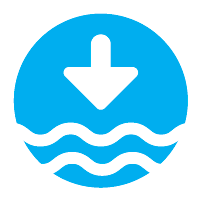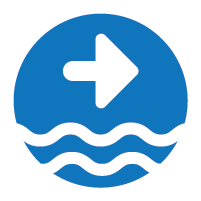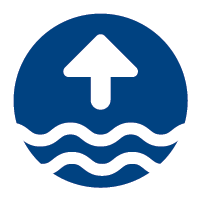I want to...
Current filter: Most popular
A to Z
Apply for a job
Biosecurity
Consents
Consultation
Contact Us
Environmental Data
Farmers Hub
Fix it or Report it
Information Request
Join an Event
Leasehold Land
Meetings
Rates
Water Metering
Flood Hub: tools and resources to assess your risk
![]()
This hub is intended as a resource to help you understand your flood risk, through real-time river level and river flow information, and real-time images from webcams in your local area. This hub will continue to be developed and improved over time.
We invite you to explore this page to understand the risk in your area and to stay informed during events.
Assess water levels in your area
The rainfall and river level data maps below can help you get information about how much rain is falling, has fallen over time, or how high the water is in rivers in your area. This data is recorded every 15 minutes, but is displayed below once an hour.
Rainfall data
Our rainfall monitoring network consists of both telemetered and non-telemetered sites across the Hawke's Bay region.
River level data
Data from Hawke's Bay Regional Council's surface water network of automatic river level recording stations throughout the region.
Webcams
These images are provided to enable the community to view environmental data alongside imagery collected by onsite automated cameras. Most images are updated hourly, but the frequency may increase during extreme weather events. The number of cameras available on this page will grow as we add existing and new cameras to our network.
Click on any image to see a larger, most-recent image. The time of the most-recent image can be seen below each image.
Where can I find out what’s happening during an event?
For the most up to date information during an event, view the following organisations Facebook pages.
Extreme Weather Hub feedback
We would love to hear how you found the extreme weather hub.
Follow this link if the form fails to load. online form.
Flood explainers at a glance
River flooding, or fluvial flooding, occurs when a river or stream overflows its banks and floods normally dry land.
Most of our major rivers – Mohaka, Esk, Ngaururoro, Tūtaekurī, Tukituki, Maraetotara and Pōrangahau in Hawke’s Bay have catchments in the foothills of the Ruahine, Kaweka and Kaimanawa Ranges. Flood flows usually happen during rainfall with an easterly or north easterly component. These rivers respond rapidly to rainfall. It may only take a few hours for this kind of flooding to reach populated areas of the region, including Wairoa, the Heretaunga plains and townships like Waipawa, Waipukurau and Pōrangahau in the south.
Lowland streams are mostly spring-fed, single channel streams. flooding in and around these streams usually occurs during long rainfall events.
Flooding often results from high water levels in these streams preventing the adjacent low lying land from draining, rather than from direct breakouts or overflows.
Our lowland streams include Karamū, Karewarewa and more.
Surface flooding, or pluvial flooding, occurs when the rate of rainfall exceeds the rate at which water can soak into the soil, or when the soil becomes saturated and excess water runs off.
Surface flooding doesn’t originate from rivers, but it will worsen the effects of river flooding in major rainfall events. High river levels can also make surface flooding worse by preventing water from draining away.
Surface flooding can occur almost anywhere and often happens quickly. Water collects in low areas, historic flood flow channels, or where obstacles like raised roads, hedges, or irrigation features prevent water from moving down gradient.
Surface flooding in urban areas is often referred to as stormwater flooding. Stormwater flooding occurs when the increased runoff from sealed surfaces like roads and driveways is greater than the capacity of stormwater systems, or if they are not working properly because of blockages or pump failures.
Coastal, or seawater flooding, happens when a combination of high tides, strong onshore winds, and elevated swells drive the sea up and over the natural beach crest or coastal stopbank.
Parts of our coastline are vulnerable to coastal flooding. It can threaten coastal communities, endanger stock, and cause long-term damage to productive land. Vulnerable locations include low-lying areas such as Bay View – susceptible to flooding, especially during storm surges and high rainfall events, Ahuriri estuary and Westshore, vulnerable to tidal flooding and storm surges, Haumoana and Te Awanga, prone to storm surges, erosion and flooding and Clifton, affected by coastal erosion and storm-related flooding.
- Identify the known risks to your property and local area.
- Connect with your nearest local resilient community hub.
- Have a plan for your family, pets and livestock should a significant flood event be forecast.
- Go to Hawke’s Bay Civil Defence Emergency Management for more information.
Stopbanks are specially designed and maintained mounds of earth that help to limit or prevent the spread of floodwater onto surrounding land. Stopbanks usually include grass cover, smooth surfaces, a consistent height and no bare soil, holes or ruts.
Most stopbanks in Hawke’s Bay are owned and maintained by us. These stopbanks may be on private or public land. Some individual landowners may have constructed their own stopbanks or other flood protection measures, however, these do not guarantee protection for wider areas of land.
Stopbanks are found beside rivers and streams that are at risk of flooding nearby land during heavy or prolonged rainfall.
While some stopbanks are put to the test regularly, others only prove their true value over time, sometimes up to 50 years or more.
Stopbanks are an effective way to prevent small to moderate flood flows from breaking out but they are only built to a certain design capacity.
Historically, our reliance on stopbanks has encouraged a higher level of development on floodplains than what might have occurred had the structural protection not been put in place.
So although stopbanks might reduce the frequency of flooding in the short-term, in the long-term they may actually increase the flood hazard posed to many communities.
Stopbanks also rely on the stability of adjacent berms and a clear fairway to perform as designed.
With climate change increasing the number and frequency of severe weather events, maintaining and improving flood infrastructure is becoming increasingly expensive and complex and the design capacity of stopbanks will continue to be pushed to their limit.
Pump stations are crucial for managing drainage in their catchments; low-lying areas where water collects from the higher areas above them. These catchments have large flat areas with limited natural drainage outlets and, while drain networks have been built to support pastoral farming and prevent water from ponding, pump stations help move water from the drainage system back to the river.
The Council is currently carrying out a substantial upgrade programme at three pumpstations in the Heretaunga Plains – Awatoto, Brookfield, and Pākōwhai – to increase their performance and resilience.
The Council manages a network of drainage systems across the region to help reduce the impacts and duration of flooding and surface water ponding.
Some areas in Hawke’s Bay are flat, with poor draining soils, making them prone to flooding from surface water and increased groundwater levels, especially during and after heavy rainfall. The drainage systems are a network of waterways and connected assets like culverts, pump stations and flood gates, that help surface water flow away.
We are responsible for the maintenance of these drainage schemes, which ensures good channel capacity and efficient land drainage. Maintenance includes weed control, the prevention of bank and bed erosion, the removal of blockages from trees or sediment, and the upkeep of culverts and flood gates.
Each year, we remove weeds using spraying or mechanical removal.
Please note, not all drains are part of a Council managed drainage scheme.
Responsibilities of the landowner
We need good access to carry out maintenance on these drains. Trees, hedges and other vegetation must not prevent access or the ability of people or machinery to enter the drain to carry out this work.
- It is your responsibility to maintain trees or hedges next to drains so they do not prevent drain maintenance or create blockages. Please collect any trimmings to avoid blockages in culverts downstream.
- While any support reducing weed growth alongside drains is appreciated, please be careful not to overspray banks, as good grass or plant cover helps reduce erosion. We advise spot spraying weeds such as gorse and broom with aquatic-approved chemicals and not blanket spraying the bank.
To prevent damage to services like pipes or wires across drains, we encourage landowners to install markers to highlight where these need to be avoided.
1% AEP (often called a "1-in-100-year flood") has a 1% chance of happening in any given year.
It's worth noting that the occurrence of a rare flood does not reduce the chances of another rare flood within a short time period. The probability of occurrence is the same every year.
This data is shared in real-time with Civil Defence Emergency Management to support informed decisions, issue warnings, and coordinate responses.
You can apply for Land Information Memorandum (LIM) from your local city or district council. A LIM is a report prepared by the city or district council at your request providing information relating to special land features or characteristics, including potential flooding, erosion and various other natural hazards. A LIM report can also include a wide range of other information about the property held by the council. Understanding of, and information on, natural hazards can change over time. A LIM report is a ‘snapshot’ in time of the information known by the council at that time. The city or district council may impose a charge or processing fee when requesting a property LIM report from it.
On 1 July 2025, new national regulations will come into force that requires the Regional Council to provide information it holds about natural hazards (including flooding) to the city and district councils. In turn, the city and district councils will be obliged to include that information in LIM reports.
The Regional Council already regularly shares new information about flood hazard mapping with the relevant city and district councils, plus various other agencies like the HBCDEM Group and key infrastructure providers.
Central Hawke’s Bay District Council webpage
Disclaimers and Copyright
While every endeavour has been taken by the Hawke's Bay Regional Council to ensure that the information on this website is
accurate and up to date, Hawke's Bay Regional Council shall not be liable for any loss suffered through the use, directly or indirectly, of information on this website. Information contained has been assembled in good faith.
Some of the information available in this site is from the New Zealand Public domain and supplied by relevant
government agencies. Hawke's Bay Regional Council cannot accept any liability for its accuracy or content.
Portions of the information and material on this site, including data, pages, documents, online
graphics and images are protected by copyright, unless specifically notified to the contrary. Externally sourced
information or material is copyright to the respective provider.
© Hawke's Bay Regional Council - www.hbrc.govt.nz / +64 6 835 9200 / info@hbrc.govt.nz
 Down
Down 1-Stable
1-Stable 10-Rising
10-Rising


















